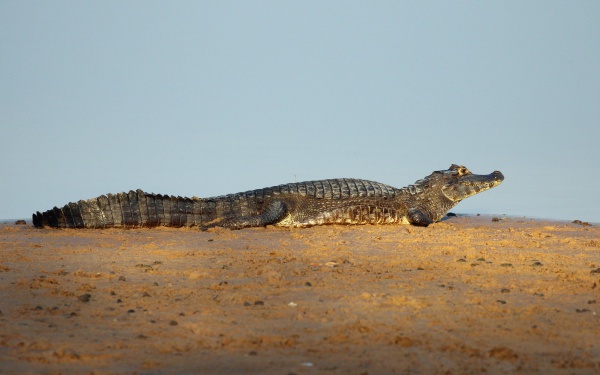Facts About Yacare caiman
The Yacare caiman, also known as the jacare caiman, is a crocodilian species native to Argentina, Bolivia, Brazil, and Paraguay. Males typically reach lengths between 2 to 3 meters, while females grow to about 1.4 meters. Sporting a brown coloration with dark blotches, these caimans thrive in lakes, rivers, and wetlands, feeding primarily on aquatic creatures. They mate during the rainy season, with their eggs hatching around March.
In the 1980s, the Yacare caiman population plummeted due to hunting for their valuable skin. However, conservation efforts have led to a significant recovery, with an estimated 10 million individuals now inhabiting the Pantanal region alone. Currently, the Yacare caiman is listed as "Least Concern" on the IUCN Red List.
First described by François Marie Daudin in 1802 as Crocodilus yacare, the taxonomic relationship of the Yacare caiman with other species remains debated. Some experts suggest it may be a subspecies of the spectacled caiman. These medium-sized caimans are characterized by their dark markings and distinctive snouts with prominent teeth.
Ecologically, the Yacare caiman shares similarities with the spectacled caiman, inhabiting semi-aquatic environments and primarily preying on snails, fish, and occasionally snakes. The breeding season runs from December to February, with females laying up to 44 eggs. The young are precocial, meaning they are relatively mature and mobile from the moment of hatching. To avoid predators such as herons and storks, they hide in grasses during the day.
Geographically, the Yacare caiman's range encompasses parts of Argentina, Bolivia, Brazil, and Paraguay. Although they were once heavily hunted for their skins, leading to a sharp population decline, conservation measures have facilitated their recovery. Nonetheless, they still face threats from habitat loss, tourism, and illegal hunting.
Despite these challenges, the Yacare caiman is currently considered "Least Concern" by the IUCN Red List. It is also listed as threatened by the United States Fish and Wildlife Service and enjoys protection under the Convention on International Trade in Endangered Species of Wild Fauna and Flora (CITES).

 Bolivia
Bolivia